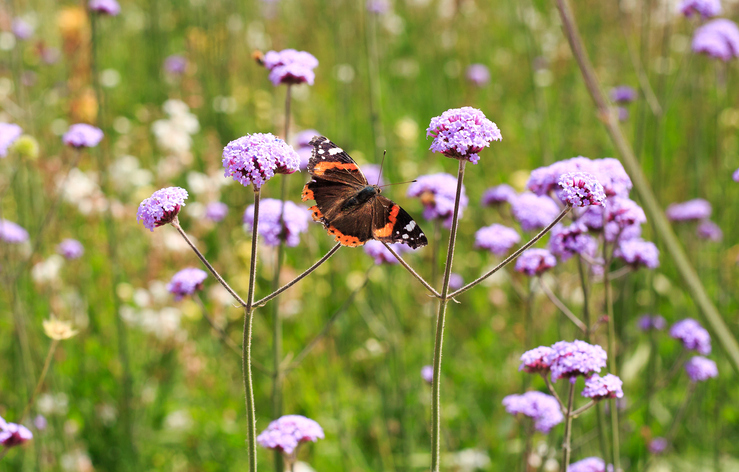Anyone else getting fed up with ‘emergencies’? There was a time when that word meant something, but not any longer now that every other quango or town council has declared a ‘climate emergency’, ‘housing emergency’ or ‘nature emergency’ (not that the existence of multiple emergencies seems to stop their staff cutting their hours to four days a week or expecting to work from a beach on the Med).
But the latest declaration really will have the blue lights flashing. Apparently we now have a ‘butterfly emergency’. This one has been declared by a charity called Butterfly Conservation, on the back of its annual Big Butterfly Count which it claims observed a 50 per cent collapse in butterfly numbers since last year.
Four species had their best ever year, including the large blue
‘The butterfly data from from 2024 is an early signal of what lies ahead,’ Tony Juniper, chair of Natural England, tells the Guardian. ‘It’s a warning from nature as to how far down the track we’ve gone towards taking the resilience out of natural systems. Of course this circles back on people in the end in terms of our food security and other factors that depend on that web of life still functioning.’ It is, he asserted, yet another grim consequence of what the Guardian these days likes to call ‘global heating’.
Steady on a bit. Before we get too depressed about the prospect of mass starvation caused by a shortage of cabbage whites it is worth asking about the provenance of the data quoted by Juniper. The Big Butterfly Count is what is known as a ‘citizen science’ project. It asked members of the public to stand somewhere for a 15 minute period between 18 July and 10 August, count the number of butterflies they saw and record them with the aid of a chart provided by Butterfly Conservation. This year, 85,000 people took part.
As a bit of fun which makes people interested in the environment it might have some merit. As scientific data it has no value whatsoever. For that, you would need to have some kind of standardisation, to make sure you are surveying a genuinely representative sample of sites – butterfly populations are not exactly distributed equally over the United Kingdom. How many you count will depend somewhat on where you choose to stand for your 15 minute shift: the Big Butterfly Count’s guidelines simply say ‘choose a spot’ where to stand, which could either be a flower-flecked meadow or Morrisons car park.
You would also want to conduct a count spread over a longer period. If you are going to ask the public to conduct a survey at a time of their choosing they are quite likely to choose to go and do their count when the weather is nice, which of course might also affect how many butterflies are around and about. You would want people who were better trained at identifying individual species than simply having a chart stuffed under their noses. Moreover, if you want to make conclusions about insect numbers, you can’t just compare numbers from one year to the next – when you have creatures which only live for a few weeks their numbers are prone to explode and contract with great rapidity. They are extremely variable from week to week, let alone year to year.
It just happens that Britain does have a proper scientific study of butterfly numbers, the UK Butterfly Monitoring Scheme, which has been going for nearly 50 years and traces the number of 58 different species of butterflies at 3,000 different sites. The Butterfly Conservation charity even helps sponsor it. So why don’t the results from this survey get reported with the same gusto as the citizen science project?
Possibly because they don’t tell a story which can be hyped into an ‘emergency’. There is no data for 2024 yet because 2024 hasn’t actually ended, but the data for 2023 shows that 30 species out of 58 have seen an increasing trend in numbers since they were first counted, which is most cases was the late 1970s. Four species had their best ever year, including the large blue, which has seen more than a 20-fold increase since it first appeared in the survey in 1983. Over the past decade, 34 out of 58 species have seen an increasing trend.
There have been some collapses, such as the Heath Fritillary, down 88 per cent over the past 42 years. But overall, the numbers are hardly indicative of a ‘butterfly emergency’, still less a collapse on human food supplies. It is yet one more case of climate campaigners preferring anecdote and dodgy-looking data over proper data when it suits them.








Comments